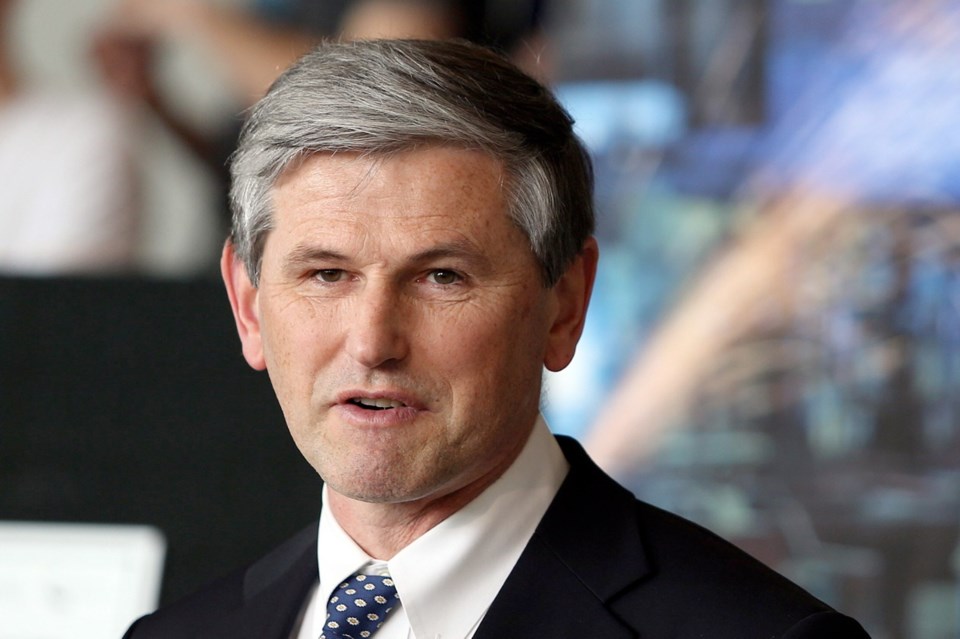 B.C.’s top three political parties got generous new year’s presents to help them through the January blues, courtesy of taxpayers.
B.C.’s top three political parties got generous new year’s presents to help them through the January blues, courtesy of taxpayers.
The first of what will be regular payments under the government’s new political-funding scheme were sent out Jan. 2.
The B.C. Liberals cashed a cheque for $995,965. The NDP got $994,882.50. The B.C. Greens took in $418,483.75. That’s half the new annual allowance they’ve got coming, so the same amounts will arrive again on July 1.
The new revenue source is based on a $2.50-per-vote subsidy that was the big surprise in last summer’s Election Amendment Act. That’s the NDP law that bans union and corporate donations and limits individual political donations. Those widely anticipated provisions were part of the NDP and Green platforms. Even the Liberals, who spurned the funding bans for years, moved in that direction during their last-minute scramble to break the NDP-Green accord and stay in power.
But no one expected the NDP to replace the lost revenue with taxpayers’ funding.
The bill includes a schedule that lowers the per-vote subsidy to $1.75 by 2022, which would gradually reduce the amounts. Then a special committee will decide whether to make public financing permanent.
Also a surprise was the provision that has taxpayers covering 50 per cent of the parties’ and candidates’ election expenses. That will bring in millions more in public funding to the parties, to the tune of tens of millions of dollars over the next four years.
It’s taking effect in the Kelowna West byelection campaign now underway.
The amounts are based on the total value of the $2.50-per-vote subsidy going to parties that got at least two per cent of the total number of valid votes, or at least five per cent of the total number of valid votes in ridings in which the party endorsed candidates.
There are no restrictions on what parties can do with the cash, so Liberal leadership candidate Andrew Wilkinson pitched an idea during the rancorous televised debate Tuesday night about how the Liberals should spend it.
“What if we went to the membership and said: ‘Let’s dedicate that $1 million to fighting proportional representation.’ What do you think? That’s what we’ve got to do.”
He followed up later by releasing a statement saying that if he wins, he’ll consult the membership on devoting proceeds from the subsidy to “fighting the NDP-Green rigged referendum.”
Wilkinson said he wants to hear consensus “on the idea of taking money that no taxpayer wanted to give to political parties and using it to fight the NDP’s rigged referendum that no one asked for.”
Looking further ahead, he also promised that if he ever becomes premier, the taxpayer subsidization of political parties will end immediately.
If the Liberals decide to pour their allowance into an anti-proportional representation campaign, it could change some current assumptions about the outcome. The NDP set the pass-fail mark as low as possible — 50 per cent plus one — and ignored the idea of requiring some regional approval thresholds.
The government also plans to campaign extensively in favour of making the change.
The possibility of multiple questions on the mail-in ballot also could work in favour of approving the change.
But then again, if the Liberals can do it, so can the others. So the NDP and Greens could pool their money and throw it into the mix on the other side of the argument. The rules that will govern the referendum campaigns will be set by government regulation. But the law that sets up the vote allows Elections B.C. to disburse funds to pro and anti camps.
The notable thing about the referendum so far is that it’s the only thing that brings the six Liberal leadership candidates together. They got into a number of dogfights about assorted issues, but they come together in opposing proportional representation. It negates any individual advantages in the current race. But the upcoming campaign is the one thing that will unite them after the new leader is chosen on Feb. 3.



